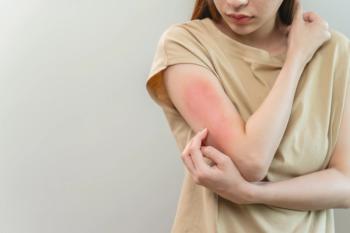
New Study Links Social Factors to Hidradenitis Suppurativa Severity
Research presented at the American Academy of Dermatology Annual Meeting 2024 explored the impact of social determinants of health on hidradenitis suppurativa severity.
This content was produced independently by The American Journal of Managed Care® and is not endorsed by the American Academy of Dermatology.
Research presented at the
Because there’s been limited research on this relationship, the investigation, led by researchers in the southeastern US, delved into the correlation between various SDOH factors and the severity of HS using geocoding and census tract–level data.
The study was conducted at a single institution's Dermatology department and involved 1384 patients with HS whose home addresses were geocoded and linked to census tracts. These tracts were then assessed using the Social Vulnerability Index, a tool developed by the CDC to evaluate neighborhood-level social needs. The researchers explored several other measures of SDOH, including access to urgent care and hospitals, unemployment rates, vehicle and internet access, median household income, and poverty levels. The analysis was adjusted for sex, race, body mass index, smoking status, and age of onset.
Results reveal that among the patients studied, 64% (n = 886) had mild to moderate HS (Hurley stage I/II), while 36% (n = 498) exhibited severe HS (Hurley stage III). The data indicated a significant association between higher social vulnerability and the severity of HS, with Hurley stage III disease being over twice as likely to occur in socially vulnerable areas compared with milder stages (OR, 2.07; 95% CI, 1.33-3.22; P = .001).
Additionally, modest associations were found between severe HS and tract-level unemployment rates (OR, 1.03; 95% CI, 1.00-1.06; P = .028), lack of access to vehicles (OR, 1.03; 95% CI, 1.01-1.05; P = .004), and limited internet access (OR, 1.03; 95% CI, 1.02-1.04; P < .001). However, no significant correlations were found between urgent care and hospital access, household income, and HS severity.
Although the findings of this study underscore the significant impact of overall social vulnerability on the severity of HS, the researchers acknowledged some limitations to their analysis. Census tract–level data for SDOH may not apply to the specific patient, and because the patient population was largely from North Carolina, the findings may not be generalizable.
They noted that further research is warranted to validate these trends at a national level, potentially paving the way for more targeted interventions and support systems to mitigate the effects of SDOH on patients with HS. Understanding these associations could lead to improved management strategies and better outcomes for affected individuals.
Reference
Shams R, McDaniel P, Stitzenberg K, Sayed C. Social determinants of health and hidradenitis suppurative disease severity: a geocoded and census tract level analysis. Poster presented at: American Academy of Dermatology Annual Meeting 2024; March 8, 2024; San Diego, CA. Poster 49636
Newsletter
Stay ahead of policy, cost, and value—subscribe to AJMC for expert insights at the intersection of clinical care and health economics.









































